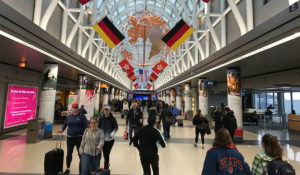The COVID-19 pandemic had and still has an unprecedented impact all over the world. While struggling to get people vaccinated, national governments and individual organizations prepared different strategies to fight this coronavirus, preserve jobs, and enable the safe restart of economies.
For instance, complete or partial lockdown, home quarantine, and online working supplement the list of traditional non-pharmaceutical interventions (NPIs) such as keeping physical and social distance, wearing protective masks and gloves, and hand hygiene. However, the scale of the pandemic has prompted scientists and workers in healthcare and other industries to look for alternative ways to protect themselves and their clients. Given the prominent rise of technology in this millennium, the implementation of artificial intelligence (AI) devices (e.g., AI robots or other automated devices) is also considered an effective tool in preventing the spread of the virus. AI devices such as robots replace humans in their work assignments, thus reducing human contact and keeping social distance.
While for manufacturing industries, the adoption of AI devices instead of humans is considered normal, services are quite different. Service industries, including tourism-, travel-, and event-related industries, often call for personal contact between a provider and a client. The simultaneous interplay between supply and demand and the tourist’s co-creation in producing her/his experiences is at the core of the tourism business. The utilization of new technologies (including AI devices) for advancing the consumer experience is not new in hospitality and tourism research because AI devices seem to be more accurate, consistent, and predictable than human beings.
However, the implementation of AI devices is still a matter of debate since tourists sometimes seem reluctant to interact with AI devices and prefer human contact. On the other hand, personal safety and perceived health risk strongly affect choices made by tourists. Consequently, tourism-, travel-, and event-related industries were particularly hit by the COVID-19. According to UNWTO, in 2020, international tourism recorded a 73% decline in tourists, from USD 910 billion to USD 1.2 trillion in export revenues, with more than 100 million jobs at risk due to COVID-19. It is assumed that it will take years for the global tourism industry to fully recovery.
COVID-19 as a striking health crisis and increased availability of new technologies triggered few conceptual studies discussing the implementation of AI devices as a safety-related measure (i.e., a measure against infectious diseases) in (post-)viral tourism (see, for instance, Seyitoğlu and Ivanov and Zeng et al.). Yet, there is a lack of studies examining the perception of tourists (i.e., the demand side) towards AI devices such as robots as a safety-related measure, which is also important to establish trust in the current as well as future post-COVID-19 tourism activities and remains under-researched, too. As argued by Yang et al., only with sustained research efforts both humans and robots will be ready for the next health incident.
